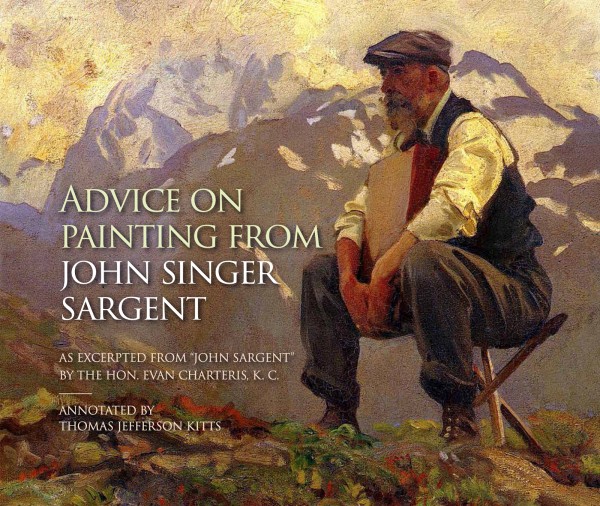
Thomas Jefferson Kitts has an incredible .pdf with excerpts from the book John Sargent, by Evan Charteris, K. C., published by Scribner’s & Sons in 1927.
This original book contained accounts from students regarding Sargent’s methods, including letters and anecdotes about his personal life.
Advice on Painting from John Singer Sargent
The pdf is freely available to Thomas Jefferson Kitts’ subscribers and can be found on his homepage.
The booklet includes annotation from Kitts summarizing or emphasizing Sargent’s advice. I’ve been reading it and found useful advice about drawing and painting from observation, which can be applied to physical and digital canvases.
Some of those tips include using a plumb line placed between you and your model to see subtle differences between angles and proportion you might have missed out otherwise, or using the dynamics between hard and soft edges in a painting to guide the viewer’s eyes through the image, or the importance of building impeccable structure before refining an image.
Paintings and close-ups illustrate each advice.

This is Mm. Gautreau, a Parisian socialite known for her beauty and elegance, who posed as a model for several artists. This depiction of her by Sargent was considered scandalous and ended the artist’s career in France.
John Singer Sargent (January 12, 1856 – April 14, 1925) is considered the most successful portrait painter of his era, having created about 900 oil paintings and more than 2000 watercolors, as well as countless sketches and charcoal drawings.
The emphasis on light and movement characteristic of impressionist works can be seen specially in his landscape paintings, although he wasn’t considered an impressionist painter to French artists such as Monet.
Thomas Jefferson Kitts
Thomas Jefferson Kitts specializes in outdoor painting (plein air painting), having won awards in California’s Arts Festival, Easton’s Plein Air festival and the Plein Air Curacao festival. He is also the author of Painting the Light, a collection with 100 of his works.
More art insights
I’m nowhere near the masters above, but I use this blog and my Patreon to share insights regarding my painting process.
Another recommendation: James Gurney’s Color and Light

Step-by-step insights shared when I was painting the piece above.

Leave a Reply